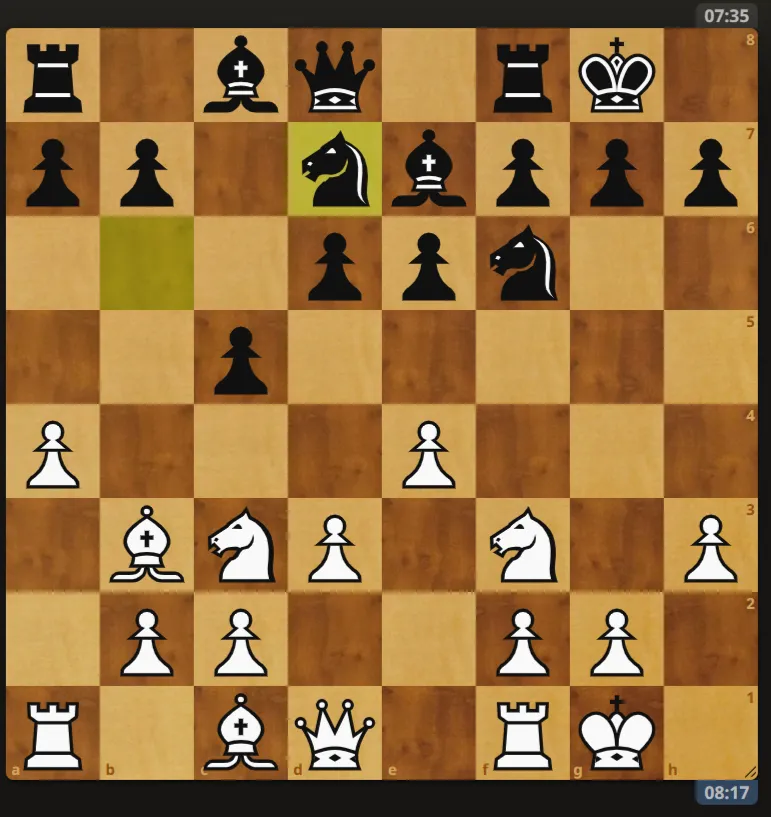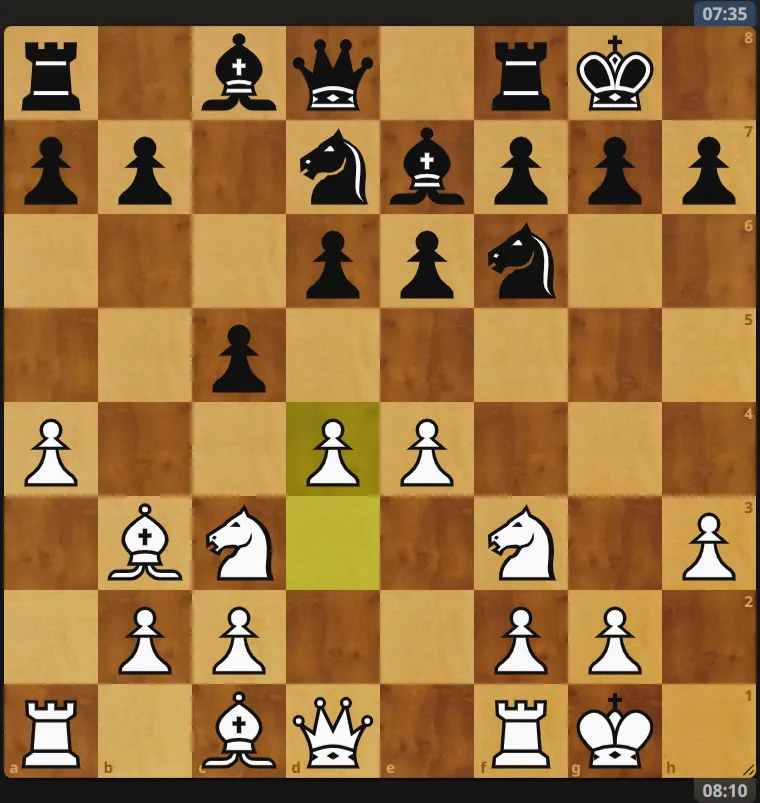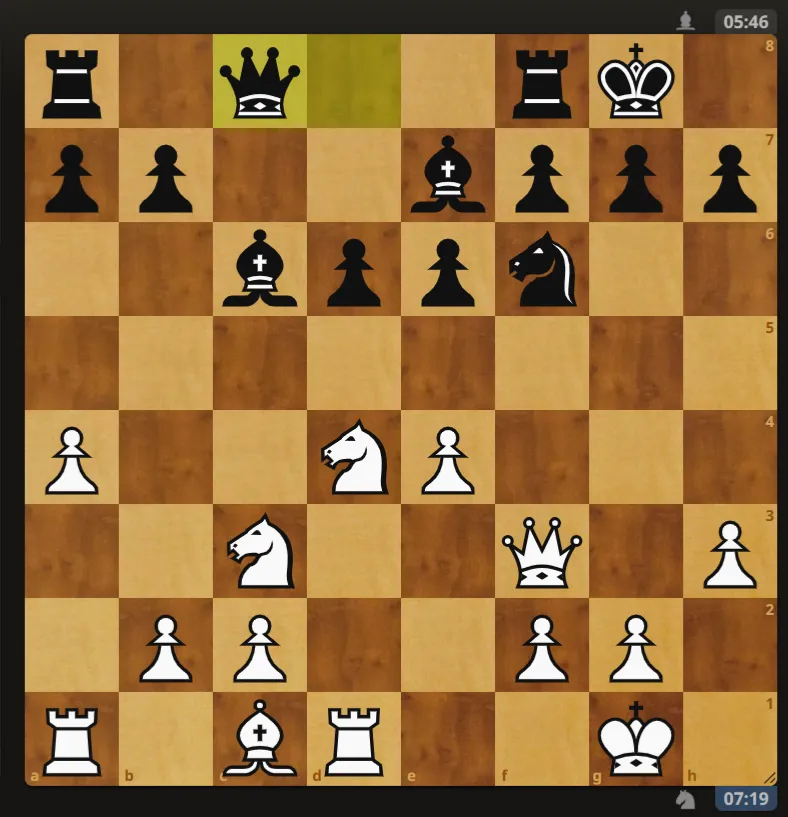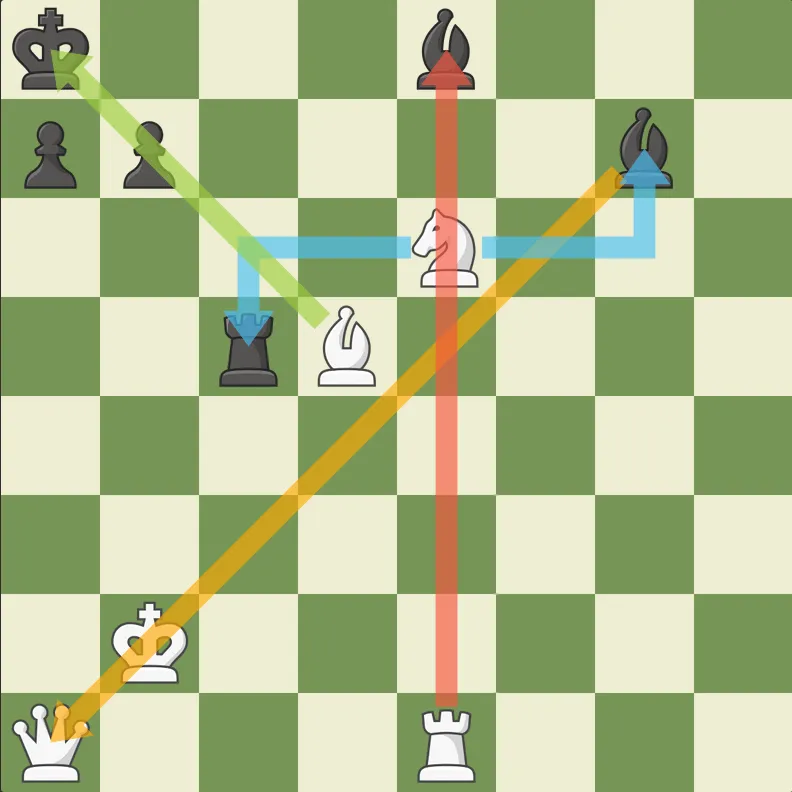Hi there, and welcome to the third lesson of the Intermediate Chess Guide to Mastery. If you are familiar with my blog, then you should know that these series are for both beginners and other players who want to improve their game. In this lesson, we will look at what to play during the middlegame.
What is Middlegame in Chess?
The middlegame in chess refers to the stage of the game when the chess pieces are developed and the kings are castled. This stage comes with confusion about what to play. Now you have developed your army as you meant to, taken your king to safety by castling, but what do I do next? Have I run out of moves, as some players may think?
Nah!
Sit back and relax as I teach you what to do in situations like this using a game of mine. The game I'm going to use is a rapid game I played against a player with the username: DrMindTrainStein in my attempt to get to 2400 in rapid rating.

This position is an example of what a middlegame in chess could look like. Most pieces are developed except white's dark-squared bishop and black's light-squared bishop, which shouldn't take much to bring out later on in the game. The first thing to look out for is:
Pawn Break in the center
When the game has gotten to the middlegame and you can see you are ahead in development, that is when more of your pieces are on good squares compared to your opponent's pieces, you go for pawn breaks in the center. These breaks will allow you to control more squares and free up more space for your pieces. The more space advantage you have on board, the better your chances of winning. And that is exactly what I did with my next move, d4.

Place your rook on an open file or semi-opened file
Another tactic to deploy in the middlegame is placing your rook on the semi-opened file. A semi-opened file is a file on the chessboard that is only occupied by a few of your opponent's pieces; in most cases, it could be a pawn. While an open file is a file on the chessboard that has no piece on it.

From the position above, you can see I have placed my rook on the d1 square, which happens to be the semi-opened square, since only black's pawn, bishop, and queen are on that square. In the long run, this can pose a problem in black's camp, and that is exactly what you want. Make the game uncomfortable for your opponent.
Centralize the knight
The last tip I would share with you in this lesson is when you have the chance, centralize your knight. To centralize your knight means to place your knight on a square in the middle, either on d4 or e4 for white, d5 or e5 for black. This is because when the knight is placed in the center, it controls more squares than any other square it could have been placed on. The only time when it is bad to centralize your knight is when the center square is dangerous for the knight or the square is taken by another piece of yours. So centralizing the knight is what I went on to do in the game.

I went on to win the game, and you can check it out here:
https://lichess.org/kx35xEI9
That is a wrap for this lesson, and see you in the next one


I am @samostically, I love to talk and write about chess because I benefited a lot from playing chess, and I love writing about chess.
♟♟♟♟♟♟♟♟♟

